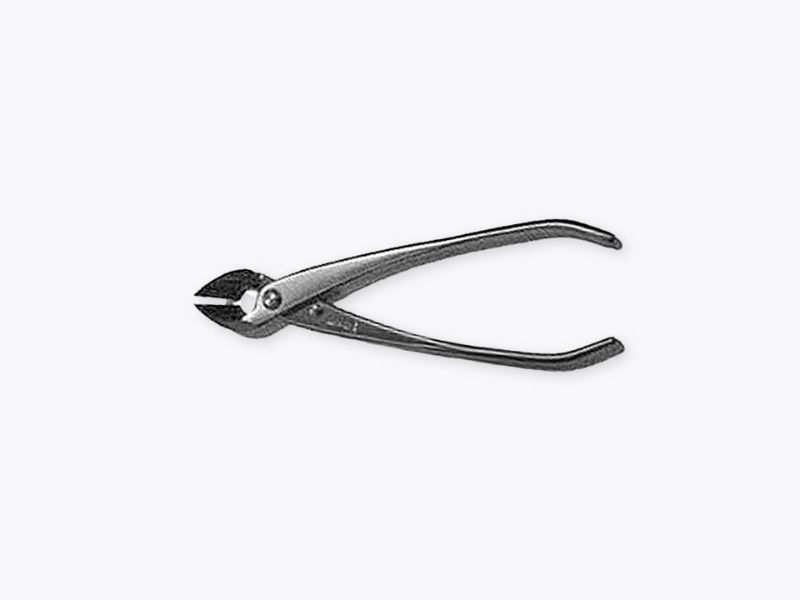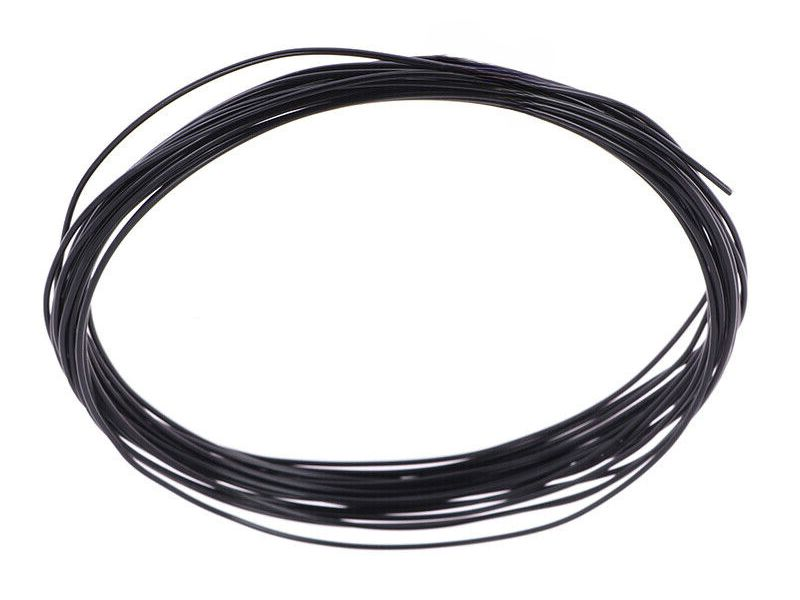Bonsai tools for beginners are the gateway to mastering the ancient and revered art of bonsai.
This intricate craft, deeply rooted in history, has captured the hearts and minds of horticulture enthusiasts worldwide. However, just as a painter requires the right brushes to create a masterpiece, the success of a bonsai artist heavily relies on using the right tools.
The distinction between a thriving, beautifully shaped bonsai tree and one that struggles to embody its intended elegance can often be traced back to the quality and appropriateness of the tools used.
As you embark on your bonsai journey, understanding the importance of these tools will set the foundation for achieving the best outcomes for your miniature trees.
Why Quality Tools Matter In Bonsai Care
In the world of bonsai, attention to detail is paramount. Every cut, trim, or wire application plays a role in the tree’s health and aesthetic presentation. Quality tools are not just a luxury; they are a necessity for several reasons:
Shaping, Growth, And Overall Tree Health
High-quality bonsai tools provide precision. With them, every snip is deliberate, and every shaping technique is executed with accuracy. This precision is essential in ensuring the tree heals correctly after pruning or wiring.
For instance, using specialized bonsai shears ensures clean cuts that minimize damage to the wood fibers, promoting faster healing and reducing the risk of disease. Additionally, when you shape your bonsai tree using quality wire cutters and bonsai wires, it allows for consistent growth patterns, aiding in achieving the desired shape without stressing the plant.
Risks Of Using Subpar Or Incorrect Tools
Using tools that aren’t specifically designed for bonsai care can lead to numerous problems. Generic pruning shears might crush the branches instead of cutting them cleanly, leading to unnecessary damage. Similarly, without the concave shape provided by concave branch cutters, cuts can be more pronounced, leaving unsightly scars on the tree.
Substandard tools also tend to dull faster, resulting in imprecise cuts that can harm the tree’s health. There’s also the risk of transferring diseases from one plant to another if tools aren’t of a quality that’s easy to clean and disinfect.
The tools you choose are an extension of your intentions for your bonsai. Investing in quality tools not only respects the art but ensures that your bonsai trees get the care and precision they deserve. As bonsai enthusiasts often say, a tree’s health and beauty are reflections of the tools and care it receives.
Essential Bonsai Tools Every Beginner Should Have
Embarking on the bonsai journey can feel overwhelming with the variety of tools available. However, understanding the basic essentials can ease the process, ensuring that every bonsai enthusiast starts on the right foot.
Here’s a breakdown of the must-have bonsai tools for beginners:
Bonsai Shears
Often described as the most used tool in a bonsai enthusiast’s arsenal, bonsai shears are designed specifically for the unique requirements of bonsai care. Their sharp and straight blade allows for clean cuts, which are crucial in ensuring the tree heals properly. Whether you’re cutting leaves, roots, or branches, bonsai shears are your primary cutting tool.
Concave Branch Cutters

Unlike regular cutters, concave branch cutters have a unique shape designed to make concave cuts. This design ensures that when the tree heals, the wound is smooth and almost invisible, preserving the natural beauty of the tree. They are essential for removing branches without causing undue damage to the tree.
Wire Cutters
Bonsai shaping often involves the use of wires. Wire cutters, specifically designed for bonsai care, ensure that the wires can be cut close to the tree without damaging its bark. This tool is crucial for achieving the desired shape and guiding the bonsai tree’s growth direction.
Bonsai Scissors
While they might look similar to regular scissors, bonsai scissors are crafted for precision. With shorter and sharper blades, they’re perfect for trimming smaller branches and leaves, ensuring that each cut is clean and precise.
Bud Shears
Bud shears, with their small and sharp blades, are specially designed for making clean cuts on delicate parts of the tree, such as buds, promoting healthy growth and minimizing the risk of disease.
Bonsai Wire

Guiding the growth direction of a bonsai tree is a meticulous process. Bonsai wire, typically made from aluminum or copper, is wrapped around branches to help guide their growth in the desired direction. The wire provides gentle pressure, ensuring the branches grow in the intended shape without harming the tree.
Bonsai Tool Kit
For beginners, a bonsai tool kit is a great investment. It usually contains all the essential tools neatly packed in a case, ensuring they’re protected and easy to transport. Having a dedicated tool kit not only keeps tools organized but also emphasizes the importance of using specialized tools for bonsai care.
Specialty And Advanced Tools
As you progress in your bonsai journey, you’ll realize that while the essential tools are foundational, there’s a world of specialized tools that allow for even more detailed and intricate work. These tools are designed to cater to specific needs, ensuring that advanced bonsai enthusiasts can achieve precise results and unique designs.
Here’s a closer look at some of the specialty and advanced tools:
Rotary Tools & Carving Tools
Carving is an advanced technique in bonsai, often used to create the appearance of age or to design intricate details on the tree. Rotary tools, equipped with various attachments, allow for precision carving, helping to craft detailed designs that bring out the tree’s character. Additionally, specialized carving tools help in creating textures, hollows, and jins (stripped branches) that enhance the bonsai’s aesthetic appeal.
Concave Shape Tools
The concave branch cutter, a staple among bonsai tools for beginners, is one of the pivotal tools in a bonsai enthusiast’s arsenal, designed specifically to create a smooth, hollow cut that heals with minimal scarring. However, while the concave branch cutter is indispensable, there are other tools designed to give bonsai trees a unique shape.
These tools often have specialized edges and shapes, allowing for more intricate cuts and designs. They’re perfect for those looking to give their bonsai a distinct appearance, different from traditional forms.
Guy Wires
While bonsai wire is used to guide the growth of branches, guy wires play a slightly different role. They are employed to hold branches in specific positions temporarily. This is especially useful when trying to achieve a particular shape or when the branch is too thick for regular bonsai wire.
By anchoring the guy wire to the pot or a heavy root, branches can be held in desired positions until they set.
While advanced tools might not be necessary for every beginner, as one’s skills grow, so does the desire to explore and experiment. These tools ensure that every bonsai enthusiast has the freedom to express their creativity to the fullest.
Material Matters: Carbon Steel vs. Stainless Steel Tools
Understanding the materials used in bonsai tools is paramount for both the longevity of the tools and the health of your bonsai. Two of the most prominent materials are carbon steel and stainless steel.
Let’s take a closer look at each:
Carbon Steel
Carbon steel is an alloy made primarily from iron and carbon. Its composition allows it to be hardened and tempered, making it an excellent material for tools that require sharp edges. The amount of carbon can vary, but it’s the carbon content that grants the steel its characteristic strength and sharpness.
Pros
- Better Edge Retention: Due to its composition, carbon steel can be sharpened to a very fine edge, crucial for the precise cuts required in bonsai care.
- Affordability: Carbon steel tools are typically more cost-effective, a key consideration for those new to the bonsai world.
Cons
- Prone to Rust: Carbon steel’s main vulnerability is its susceptibility to oxidation, meaning it can rust if exposed to moisture for extended periods.
- Frequent Sharpening: The very nature that allows it to be sharpened finely also means it might need more regular sharpening, especially with heavy use.
Stainless Steel
Stainless steel is a group of steel alloys that contain a minimum of approximately 11% chromium, a composition that prevents the iron from rusting and provides heat-resistant properties. This makes stainless steel a favorite for various applications, including bonsai tools.
Pros
- Rust Resistant: The chromium present in stainless steel forms an invisible surface film that prevents rust formation, making maintenance simpler.
- Long-Lasting Sharpness: While it might not achieve the razor-edge of carbon steel initially, once sharpened, stainless steel retains its edge longer.
Cons
- Cost: The benefits of stainless steel come at a price, making these tools generally more expensive.
- Sharpness: When compared to the finest carbon steel tools, stainless steel might not achieve the same level of initial sharpness.
Guidance for Beginners

When embarking on your bonsai journey, consider your budget, the level of maintenance you’re comfortable with, and how frequently you’ll be using the tools. Carbon steel is perfect for those who prioritize sharpness and are mindful of tool care, while stainless steel is ideal for those seeking durability and lower maintenance.
Remember, whether you choose carbon or stainless steel, the key is to invest in quality tools and maintain them properly. Both materials, when crafted well, can serve a bonsai artist excellently.
The Potting Process And Essential Tools
Potting is a crucial aspect of bonsai care, especially for those equipped with bonsai tools for beginners. The act of transferring a tree to a pot might seem straightforward, but it’s an art in itself, requiring precision, care, and the right tools. Using the appropriate tools ensures the tree remains healthy, grows correctly, and looks aesthetically pleasing.
Here’s a breakdown of essential tools used during the potting process:
Bonsai Pot
A bonsai pot is not just any container. It’s specifically designed to cater to the unique needs of bonsai trees. The size, depth, and drainage of a bonsai pot play significant roles in determining how a tree grows. Moreover, the aesthetics of the pot complement the beauty of the tree, making the selection of an appropriate pot a vital step in bonsai presentation.
Bamboo Chopsticks
While it might seem like a simple tool, bamboo chopsticks are indispensable in the potting process. They are used to aerate the soil, ensuring there are no air pockets, which could harm the roots. Additionally, they assist in positioning the tree just right within the pot, ensuring it sits at the desired depth and angle.
Root Rakes
Before potting a bonsai tree, it’s essential to prepare its roots. Root rakes are designed to gently detangle and spread out the roots, ensuring they are distributed evenly in the pot. This helps in avoiding root rot and ensures the tree gets nutrients uniformly from the soil.
Root Cutters
Not all roots are beneficial for the bonsai. Thicker roots can often consume more than their fair share of nutrients, stunting the growth of the tree. Root cutters, a key component in bonsai tools for beginners, with their sharp and precise blades, are perfect for trimming away these thicker roots, ensuring a balanced root system.
Soil Scoops
Potting can be a messy affair, but with soil scoops, you can distribute the soil evenly and with minimal mess. These scoops are designed to hold just the right amount of soil, ensuring that the tree has adequate, but not excessive, soil surrounding its roots.
Watering Can With Fine Nozzle
After the strenuous process of potting, it’s crucial to water the bonsai tree gently. A watering can with a fine nozzle provides a soft shower, ensuring the freshly potted tree isn’t disturbed. This gentle watering also helps the soil settle in around the roots.
Tips For Maintaining And Caring For Your Bonsai Tools
Your bonsai tree isn’t the only living masterpiece that requires careful attention; your tools do too. As with any specialized craft, the longevity and efficiency of your tools are paramount in ensuring consistent results and minimizing potential harm to your bonsai.
Here’s how to ensure your bonsai tools remain in top condition:
Cleaning Your Tools
- Immediate Care: After each use, wipe away any sap or debris from your tools with a soft cloth. Bonsai trees often produce sap that can stick to tools, and if left uncleaned, this can corrode the metal over time.
- Deep Cleaning: Periodically, give your tools a more thorough cleaning using a mild detergent. Ensure they are completely dry before storing.
Storing Your Tools
- Dry Environment: Always store your bonsai tools in a dry environment. Moisture is the nemesis of metal tools, leading to rust and degradation. Consider using silica gel packs in your storage box to absorb any excess moisture.
- Organized Storage: Use a tool roll or dedicated box. Not only does this prevent your tools from knocking against each other, which can cause damage, but it also ensures you can quickly find the tool you need.
Ensuring Longevity And Preventing Rust
- Oil Them: A light coating of camellia or mineral oil on the metal parts of your tools can prevent rust. Do this especially if you’re storing tools for an extended period.
- Sharpness: Regularly check the sharpness of your tools. Dull tools can harm your bonsai by causing uneven or jagged cuts. Use a sharpening stone to maintain the edge of cutting tools.
Continuous Learning
As a bonsai hobbyist, the learning never stops. From understanding the unique needs of different tree species to mastering advanced pruning techniques, there’s always something new to explore. Your tools are extensions of your hands in this art form.
By caring for them, you’re not only ensuring their longevity but also affirming your commitment to the craft. Join bonsai communities, attend workshops, and share experiences. The more you learn, the more your bonsai – and the tools that shape them – will flourish.
Remember, every time you use a bonsai tool, you are partaking in a centuries-old tradition. The care and attention you give to your tools reflect your respect for this ancient art form. Enjoy your journey in bonsai crafting!






0 Comments